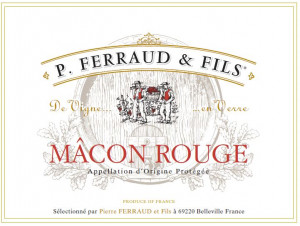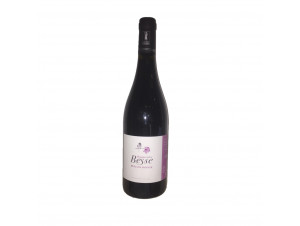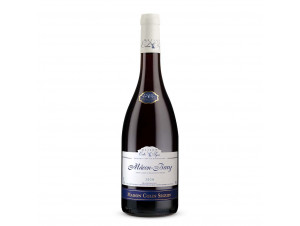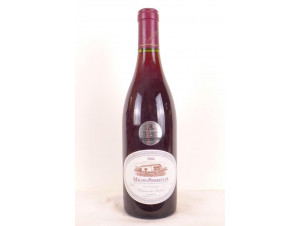You have no items in your shopping cart.
Wine Mâcon
The Mâcon appellation is the southernmost of the Burgundy vineyards. Spread over 91 communes between Chalon-sur-Saône and Villefranche-sur-Saône, the vineyards are located on the hillsides and the plain of the Saône. White wines made from Chardonnay have made the reputation of Mâcon wines, but they are not the only ones in the AOC since red and rosé wines are also represented. Read more on Mâcon
-
Top Selling
-
Top Selling
-
Top Selling
Appellation Mâcon
The Mâconnais has a monastic history
The presence of vines in the Mâconnais is dated from the 3rd century. The monastic orders of the Abbey of Cluny and Tournus were to play a leading role in the spread of wine-growing and the trade in Mâcon wines in the Middle Ages. Chardonnay was planted to produce quality white wines. The fiscal taxes imposed by the city of Lyon will make producers reluctant to export wines for everyday consumption, this will encourage them to turn to the production of quality wines whose prices are higher. It was in the 17th century that they planted a fine variety of "petit gamay".
Like all vineyards, that of Mâcon will be affected by the phylloxera crisis. This crisis will lead to the grouping of producers of the appellation to defend the name of their region. This led to the recognition of the AOC Mâcon in 1937. Nevertheless, the crisis of overproduction in 1920 affected this vineyard and led to the creation of a cooperative movement which in the Mâconnais led to the opening of the cooperative cellar of Saint-Genoux-de-Scissé in 1926.
The Mâcon AOC has a geographical unity only in appearance
The Mâcon vineyard stretches for 50 km between the village of Sennecy-le-Grand in the north and Chaintré in the south. The Mâcon AOC applies to 91 communes, 80 of which also have the right to the Mâcon village appellation, which applies only to white wines. It is bounded to the north and east by the Saône valley, to the west by the Grosne valley and to the south by the "Monts du Beaujolais". The climate is oceanic with a southern tendency, i.e. the summers are hot and sunny and the winters relatively mild. Excessive humidity is limited by the Saône and the Charolais. Rainfall is spread throughout the year.
The landscape of the Mâcon vineyard presents 6 chains exposed North/North-East and South/South-West. The top of these ranges is wooded. The ranges have tilted towards the east, which gives the following succession of bases from west to east: granitic or schistose from the Paleozoic era covered by sedimentary layers of limestone or clay from the Triassic and Jurassic periods. The granitic base outcrops in the western and southern part of the appellation.
The bases give different soils. On the granitic basement the soils are sandy and filtering, the stony and clayey soils rest on the schistous basement, the calcareous soils come of course from the calcareous basement and the marly basement give decarbonated silty soils. The geological hollows of the AOC have sandy-siliceous soils, flinty clay or calcareous conglomerates. The soil of the foothills is clayey-silt due to the degradation of the limestone and marl subsoils.
The chalky soils on the slopes are exposed to the East and are used for the production of white wines with the right to the Mâcon village appellation. The marly soils located on the slopes and the foothills will produce fresh and balanced white wines, of pleasure. As for the red wines, made from Gamay or Pinot Noir grape varieties, they present their best expression on hillsides whose soils come from the granitic base.
What are the organoleptic characteristics of a Mâcon?
The white wines of the Mâcon AOC have a golden coat with a hue that varies from white to straw yellow. The nose develops notes of white flowers such as acacia, honeysuckle, verbena or even white rose. One also discovers notes of citrus, quince and fennel. The mouth is fruity, round and suave marked by an acidity to support the longness in the mouth.
The red wines have a ruby colour. The nose delivers notes of red and black berries, undergrowth which with ageing gives aromas of prune, pear and animal notes. The mouth is fleshy, tasty which requires some ageing to release all its greed.
Rosé wines are in the minority in this appellation. The nose develops notes of red fruits. The mouth is greedy, fresh and fruity.
With what food to enjoy a Mâcon?
White wines can be enjoyed as an aperitif but also with white meat such as poultry or veal, risotto, grilled fish, sushi or goat cheese.
Red wines are best enjoyed with fine charcuterie such as ham, terrine or pâté. They go well with fibrous meat such as rabbit or boiled beef. It can also be enjoyed with a burger, tapas or with a mixed salad.
Rosé wines go well with fine charcuterie, couscous, tagine, omelette or vegetable gratin.
The vintages of AOC Mâcon
The white wines of Mâcon have very nice organoleptic expressions on the vintages 2004, 2005, 2006, 2010, 2014, 2015, 2016, 2017 and 2018.
The red wines of Mâcon have very nice organoleptic expressions on the 2005, 2007, 2009, 2010, 2014 and 2015 vintages.
Mâcon estates to discover
The Guffens-Heynen estate
Domaine Guffens-Heynen, is a must-see estate in the Mâconnais. Maine and Jean-Marie Guffens-Heynen began their winegrowing adventure as owners in 1979 with the acquisition of vines on the heights of Pierreclos. They have been able to deliver to wine lovers the best expression of Chardonnay, on the 6 ha they exploit, and have made wine lovers want to discover this vineyard, sometimes unknown.The Domaine de la Soufrandière
The Domaine de la Soufrandière is a family estate located in Vinzelles. The 11 ha area is cultivated according to the rules of organic and biodynamic agriculture (Deemter certification). Exclusively planted with Chardonnay, each wine reflects its terroir of origin with precision and finesse. The wines on offer span the entire Mâconnais vineyard.The Bret brothers, the current owners of this estate, are also behind the creation of the micro-negociant: Bret Brothers. The grapes purchased are certified organic or in conversion, they are vinified in Vinzelles with the same high standards as the estate's wines. The white wines offered are from the vineyard of Mâconnais while the red wines come from the crus of Beaujolais.

































 TWIL - Achat de Vin
TWIL - Achat de Vin


